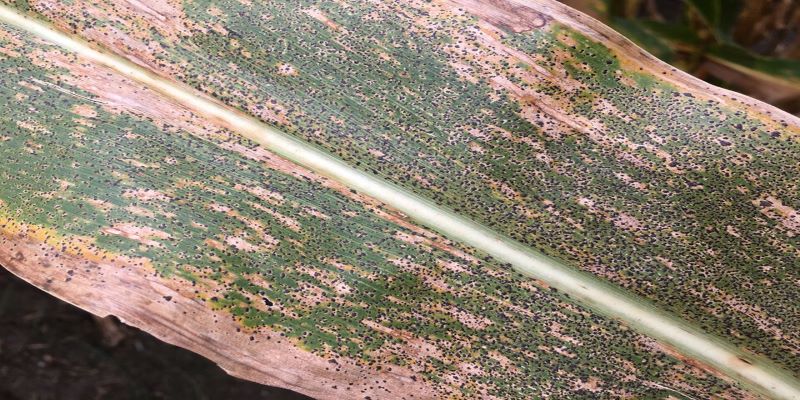August 15, 2022

Tar spot is top of mind for many Corn Belt farmers. Caused by the fungal pathogen Phyllachora maydis, tar spot reduces yield potential by affecting the photosynthetic capacity of leaves and causing rapid premature biological aging or leaf senescence.
Initial symptoms include small brown lesions that darken with age. Early signs of tar spot can be mistaken for insect feces. Tar spots (stroma) are embedded in leaf tissues and are often visible on the underside of the leaf. The texture of the leaf often becomes bumpy and uneven when the fruiting bodies are present. This foliar disease may be difficult to find if infections develop in patches in the middle of a field.
“Tar spot scouting begins with looking into the canopy and using the sun to look for shadows on the underside of the leaves,” said Kevin Fry, a Pioneer Field Agronomist in Pennsylvania.
Ideally, a fungicide application should be made before tar spot is firmly established. Once identified, tar spot can be difficult to stop. Applying fungicide between VT and R4 can help keep tar spot at bay.
For fields with a history of tar spot, a second fungicide application later in the season can offer additional protection. Duration of leaf surface wetness appears to be a key factor in the development and spread of the disease. Scouting fields after rain events can help growers spot tar spot sooner.
“Tar spot will persist with the wet, humid weather,” Fry said. “Growers should continue walking their fields and looking for tar spot.”
Source: Corteva Agriscience, who is solely responsible for the information provided and is wholly owned by the source. Informa Business Media and all its subsidiaries are not responsible for any of the content contained in this information asset.
About the Author(s)
You May Also Like






